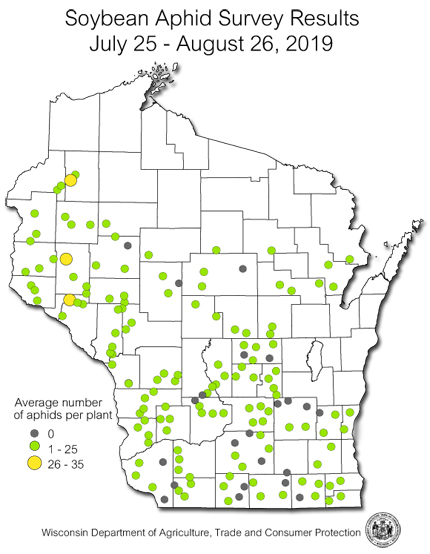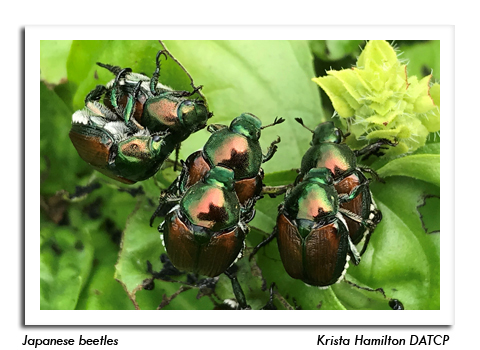
 |
|
|
Soybeans
Volume 64 Number 18 Date 08/29/2019 SOYBEAN APHID - Populations recorded during the annual survey this month have been very low, aside from a few western Wisconsin fields with moderate populations. The state average count in 160 fields sampled from July 26-August 26 is only five aphids per plant, with no surveyed fields showing above-threshold populations of 250 aphids per plant. For comparison, the 2018 survey found an average of 14 aphids per plant, the 2017 average was six aphids per plant, averages from 2013-2016 ranged from 8-55 aphids per plant, and surveys from 2010-2012 documented counts of 7-16 aphids per plant. This season's state average is the lowest in the 18-year history of Wisconsin soybean aphid surveys. Although some localized fields have likely developed economic populations (>250 aphids per plant), survey results suggest that aphid control has generally not been required for most soybean acres this year. In addition, no cases of pyrethroid insecticide failure were reported in the state in 2019. JAPANESE BEETLE - Defoliation has been observed in 75% of the soybean fields examined in August. Counts taken during the soybean aphid survey ranged from 1-184 beetles per 100 sweeps, with a state average of 14 per 100 sweeps (8 per sweep in 2018). The highest counts of 50 or more beetles per 100 sweeps were noted in Crawford, Dunn, Green Lake, Pierce, Rock, Sauk and Walworth counties. Although beetles are still apparent in crops, orchards and residential areas, much of their activity should decline within two weeks. The prevalence of Japanese beetles documented by the survey signals that this invasive pest continues to pose a significant threat to the state's soybean crop. -- Krista Hamilton, DATCP Entomologist 



|
|
|